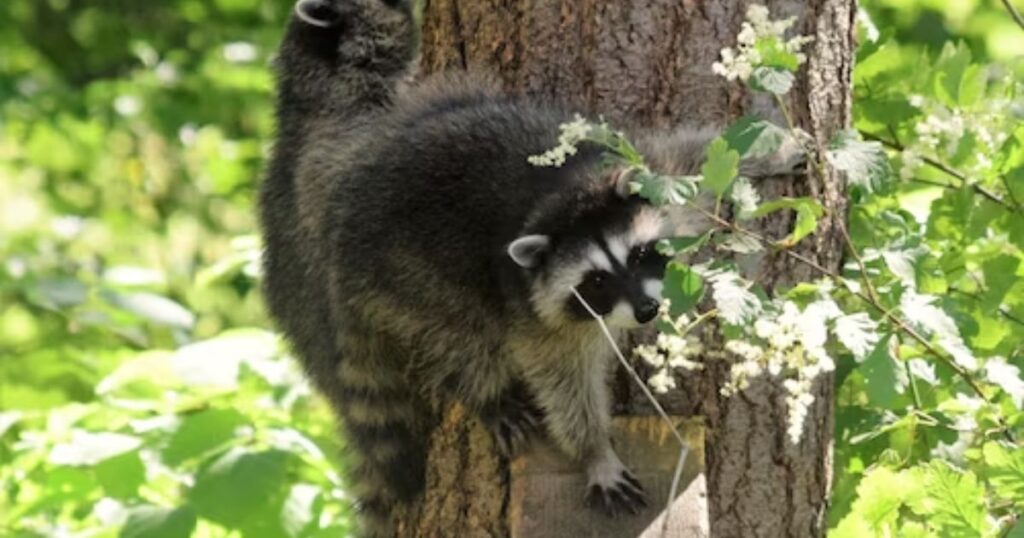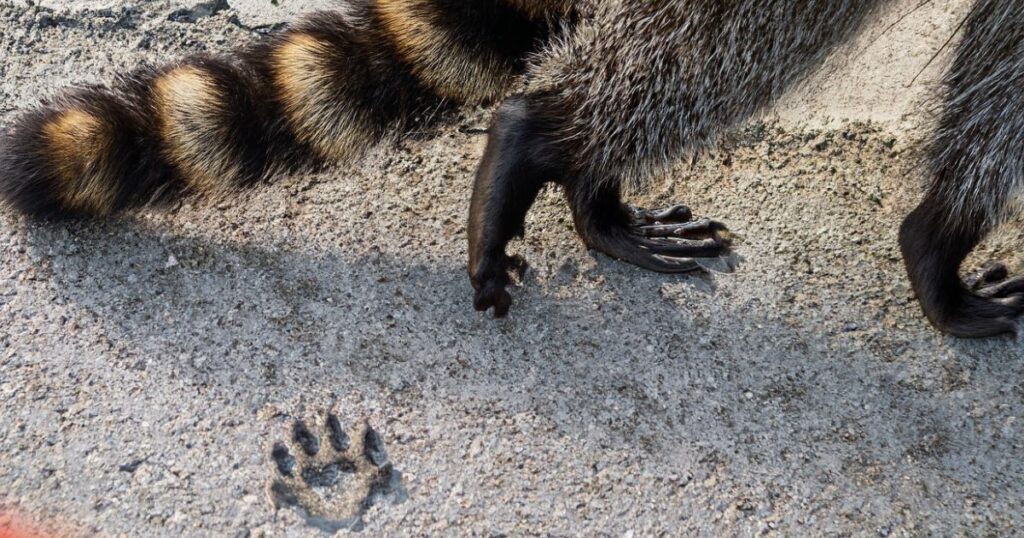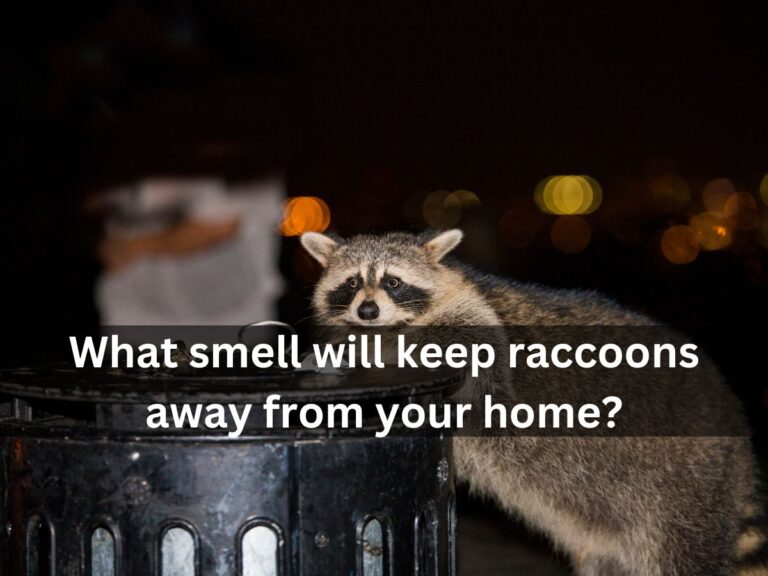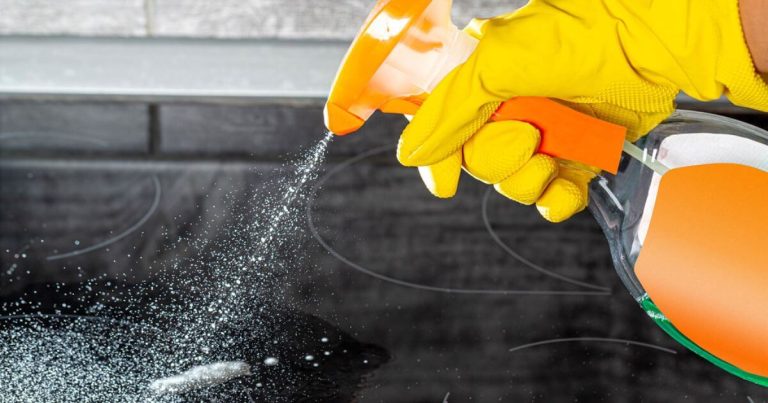What are the Signs of a Raccoon in the House?
Have you noticed odd noises or evidence of an intruder in your home recently but cannot trace the source? If you’ve found piles of scat in the attic or heard shuffling above the ceiling late at night, there’s a good chance crafty raccoons have taken up residence without permission. So, what are the signs of a raccoon in the house?
Here are signs of a raccoon in the house:
- Tracks and traces of scat
- Scratches on or around the home
- Your pets are anxious staring at ceilings or crawl spaces
- Pets avoid certain parts of the home
- Latrines in attics where raccoons live
- Accumulated piles of feces in latrines
- Feces that look similar to a dog’s but larger
All these will point to a raccoon problem, and you will want to know what to do to get rid of it. Read on as we look at these signs in depth and your options to keep the raccoons away.
What are the Signs of a Raccoon in the House?
Raccoons are expert climbers and problem solvers that can infiltrate homes through even the smallest openings. Once inside, they wreak havoc on attics, crawl spaces, and walls while leaving behind clues of their covert operation.
As masked bandits of the night, raccoons try to keep their activities undercover. However, they inevitably slip up, littering forensic traces of their infiltration. Recognizing raccoon presence can help homeowners quickly safeguard their property and family. Here are 10 signs of a raccoon in the house:
Tracks and traces of scat

If raccoon tracks are found inside or outside the home, it provides clear evidence they have been on the property. Raccoon tracks often show a distinct pattern, with five toes visible in each paw print. Examining tracks can reveal details like the raccoon’s size and gait.
Homeowners should carefully inspect areas around entrance points like chimneys, crawl spaces, attics, and any place where raccoons may gain access. Inside the home, tracks could be found on floors, walls, or surfaces like insulation in the attic. Finding raccoon tracks confirms they have been actively moving through or exploring the area.
Additionally, raccoons will typically designate latrine areas inside and outside the home where they repeatedly leave scat. Upon closer inspection of areas like attics that could be entry or living points, piles of scat may be noticeable. Raccoon scat is larger than most other wildlife and will often be accumulated rather than sporadic.
Not only does the presence of scat prove a raccoon has been there, but its location can also give clues to travel routes or living quarters. Even a few droppings are evidence, and examining the scat can indicate raccoon health.
There are visible scratches on or around the home
Areas that show fresh scratch marks should be closely inspected for raccoon entry or activity signs. Raccoons commonly scratch on various surfaces as part of their natural behavior, such as using claws to climb or exploring textured materials.
Examining the home, trimming, fencing, and surrounding vegetation for new scratch marks can help identify points of vulnerability. Once inside, claw marks left on wooden structures, insulation, and other surfaces the raccoon encounters provide validation of their presence. Deeper scores or punctures may also suggest nesting or denning behavior.
Noises in the Attic or Crawl Space
Noises in the attic or crawl space can be a telltale sign that raccoons have taken up residence. As raccoons are primarily nocturnal animals, homeowners are likely to hear noises coming from these areas at night. They may hear scratching, scampering, or the pitter-patter of small feet as raccoons explore and rummage and during the day while the raccoons sleep. The sounds seem to come from empty space and can be difficult to locate.
Over time, homeowners may start hearing these noises even during the day as the bold raccoons become more active even when not in the cover of darkness. Persistent sounds of movement in areas where nothing should be present during daylight hours is a strong indication that raccoons, or potentially other wildlife, have made themselves at home above or below the living space.
Your pets are anxious staring at ceilings or crawl spaces
When raccoons reside near a pet’s territory, such as within the walls or attic, dogs and cats often exhibit stressed body language like fixated staring and tense postures.
Their anxious staring and paw tapping at certain areas could indicate raccoon movement they detect through sounds, scents, or vibrations you cannot perceive. Whimpering, whining, or restlessness from pets normally comfortable in their own home is a cause for concern of a raccoon intruder upsetting the status quo.
Pets avoiding certain parts of the home
It warrants investigation if pets suddenly shun a previously favorite sleeping spot or other area. Raccoons choosing the attic, walls, or crawlspaces for living quarters will cause pets living in the home to naturally avoid interacting with such an unfamiliar interloper on their territory.
Pets demonstrate raccoon presence even if not directly observed by steering clear of entry points, dens, or other sections of the house that now smell or harbor signs of raccoon inhabitance. Their changed behavior points handlers towards raccoon evidence.
Pets keep whining (a change of their behavior)
Anxious behavior in pets, such as staring or avoidance, can escalate to distressed vocalizations if the raccoon’s presence continues unchecked. Whining, whinging, and high-pitched cries from dogs and cats indicate fear, uncertainty, or perceived threats.
These sounds signal the pet senses an unwelcome intruder near its territory that it cannot confront or understand. Whining pets likely detect raccoon activity through alternative sensory methods like hearing scrambling, scratching, or other movements within walls or above. Their vocal protests serve as a warning to owners to investigate the concealed source of pets’ distress.
Pitter-patter of not-so-little feet in the attic, walls, or under the house

Active raccoons within a home’s confined spaces often generate distinct scraping, scratching, and scurrying noises as they navigate. The padded footfalls sound heavier and more deliberate than rodents.
Individual footfalls in cadenced pairs usually reveal raccoons ambulating in their typical semi-plantigrade style. Nocturnal movement noise from unintended places like sealed wall cavities or above occupied rooms warrants concern. It suggests successful raccoon entry and concealed habitation that owners cannot readily see.
Latrines in attics where raccoons live
As area-dominant crepuscular mammals, raccoons select private dens to centralize waste and enrich the area with scents. Their well-trafficked attic quarters are ideal for latrine sites, sparing raccoons from venturing elsewhere for sanitation.
Accumulations of scat, urine, and other raccoon wastes will likely concentrate in a single localized area where they enter and exit the living space. These scent-dense latrines signal established raccoon occupancy through dedicated defecation sites.
Accumulated piles of feces in latrines
Regular use of a latrine results in gradual mounding of raccoon feces, urine, and associated materials over time. Distinct piles denote extensive raccoon visitation contrary to sporadic scat.
Close inspection reveals clues like compaction from multiple deposits. Older scat decomposing at the base indicates long-term latrine occupation. Such concentrated deposits leave no question that raccoons call a particular space within the structure their own.
Feces looking similar to a dog’s but larger
Though resembling enlarged dog feces, raccoon scat can usually be distinguished upon close examination. Raccoon scat averages over an inch long, roughly the diameter of a pencil.
With a darker coloration and ribbed texture, it has a noticeably robust and elongated form, exceeding most dogs. Containing partially digested fruits, vegetable material, and animal bones, raccoon scat reveals a more carnivorous-omnivorous diet profile than domestic dogs.
What to do if there is A Raccoon in the House
If, after investigating, you’ve determined that a raccoon has indeed taken up residence within your home, it’s important not to panic. Raccoons can feel threatened and protective of their space, so handling the situation improperly could lead to an attack. The best solution is to safely remove the raccoon and prevent future intrusions. Here are the key steps to take:
- Remain calm and avoid sudden movements. Raccoons can become stressed or feel threatened by loud noises or erratic behavior. Speak in a low, soothing tone to not further alarm the raccoon.
- Thoroughly inspect potential hiding spots. Look in attics, crawlspaces, outbuildings, and sheds around your property. Lift insulation check under porches or decks. Raccoons like small, enclosed spaces, so be diligent in your search.
- Encourage natural exit if possible. Slowly open the door or window of any room where the raccoon is contained inside. Remove furniture or other barriers between the exit points. Stand back and let the raccoon choose to leave on its own accord when it feels safe.
- Use long-handled equipment for extraction. A snare pole, hot-stick, or thick work gloves can aid removal from hard-to-access areas like attics without risking personal injury. The pole or stick allows safely snaring the raccoon from a distance.
- Place live traps with bait near evidence or activity sites. Baits like peanut butter, marshmallows, or canned fish can lure the raccoon inside. Ensure trap doors close securely. Wear gloves for handling and relocate the trap at least 5 miles away to release.
- Inspect and seal all potential entry points. Raccoons can enter through holes as small as 4 inches, so check vents, chimneys, holes in siding, gaps around pipes, and more. Use durable sealants to fully exclude unwanted wildlife.
- Contact professional help if needed. Wildlife removal experts have the safest and most effective live traps, exclusion techniques, and experience to resolve issues quickly and humanely.
What are Some Humane Ways to Deter Raccoons from Your Yard?
Raccoons are resourceful creatures and will continue revisiting areas where they find food or shelter. If one has taken a liking to nesting or foraging in your yard, it will likely keep returning until deterred. With some effort, raccoons can learn to stay away from a heightened activity area. Here are some top humane deterrent tactics to persuade raccoons to vacate your outdoor areas:
Here are some humane ways to deter raccoons from your yard, along with comprehensive descriptions:
Remove Access to Food and Shelter
Raccoons are often drawn to yards by easy food scraps or shelter access. Secure all trash in sturdy, latched bins and pick up fallen fruit. Ensure pet food isn’t left outside, and check for potential dens under decks or sheds. Removing these basic attractants can solve many issues.
Use Deterrents That Don’t Harm
There are many human raccoon-deterring options available that you can employ to make sure the masked home invader doesn’t get to your home again. They include:
- Optical deterrents: You can hang aluminum foil shiny CDs/DVDs in trees to naturally discourage raccoons without causing injury. Place near problem areas and change locations periodically for best effect.
- Deterrent scents: Strong scents like garlic, pepper, or ammonia sprayed around dumpsters or gardening areas can mask other smells and deter raccoons. Reapply after rain.
- Sounds: Motion-activated devices that spray water, make loud noises, or emit high-frequency sounds when triggered work well for some homeowners. Move devices regularly and vary activation settings.
- Motion-activated lighting and sprinklers: These can also be effective. Employ them around the house, and they will help surprise the raccoons, deterring them from progressing.
Block Entry Points with Barriers
Close gaps under porches, sheds, or around chimneys that raccoons can navigate into with 1/4-inch wire mesh, flashing, or durable sealants. For decks, trim branches at least 6 feet off the ground and use skirting to remove cover for potential trespassers.
Remove Shelter Through Plant Selection
Thorny, prickly plants like roses or berry brambles are unpleasant for raccoons to navigate. Place prohibitive vegetation strips around property borders or entrances. Also, avoid woody shrubs for cover and eliminate hiding spots near the home.
Use Predator Urine to Mimic Threats
Trace scents from coyote, fox, or wolf urine can temporarily convince raccoons they may encounter danger. Apply sparingly every 3-4 weeks and alternate scent types/locations. Avoid commercial lures containing harmful attractants.
Call Professionals for Complex Issues
Trapping may be needed if raccoons are habituated, or issues persist after other methods. Contract qualified exclusion specialists for safe, lasting solutions prioritizing wildlife welfare and deterrents.
Conclusion
Raccoons are problem animals, especially when they enter your home. You can tell there is a raccoon in the house from its tracks and traces of scat, scratches on or around the home, anxious pets, and latrines in attics.
It’s important to take the necessary steps to eliminate them, such as removing access to food and shelter, using non-lethal deterrents, blocking entry points, removing shelter with plant selection, and using predator urine.
If the problem is too complicated, it is best to contact professional help. With the comprehensive measures discussed above, you’ll ensure your home is safe and raccoon-free.


![What Could Be Making Noise in My Ceiling? [Possible Causes and Fixes]](https://www.homeimprovementdock.com/wp-content/uploads/2022/11/Possible-Reasons-and-Solutions-of-Noise-in-the-Attic-or-Ceiling-768x512.jpg)


